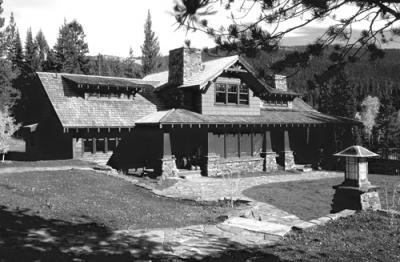Montana Real Estate Rebound

As I travel across this magnificent state, I am awed by the great resiliency of the people who live here and their ability to survive, rebound, and in some cases thrive in economic challenges. For the first time in several years, there is a sense of renewed optimism, energy, and confidence in almost every real estate market around the state. Although each area is in a different stage of recovery, most communities agree that brighter days are ahead.
The marketplaces in Montana are as distinctive as the economic bases, physical attributes, and multifaceted panoramas that surround each “metro” market. The “Big Seven” communities make up nearly 40% of the state’s population. In 1870, Montana’s population was just over 20,000. During the next 50 years of discovery…the Homestead Era, it boomed to over 1/2 million by 1920. It took an additional 90 years to double to a million.
Just as the Continental Divide separates the watersheds in Montana, view sheds are split into the prairies of the East and the mountains of the West. The economic diversity is also geographically divergent from agriculture and energy industries in the east to tourism and recreation in the west. The east is rarely touched by out of state influence, and the west has been heavily impacted in the last 20 years with recreational and vacation homes. The growth of tourism in and around our two National Parks, Glacier and Yellowstone, directly correlates to second home growth in the Flathead, the Bitterroot, and greater Bozeman-Big Sky areas from 1992 to a peak in 2005. This era produced a tremendous increase in the number of sales and strong across-the-board appreciation.
Let’s take a look at several of the western markets, which were more harshly impacted than eastern Montana in the last four years with declining sales and values. Reports from Missoula indicate that inventories are stabilizing and sales are increasing. Missoula has always been a relatively stable market because of its broad economic base, despite the loss of several major employers in early 2011. Single-family home sales were relatively flat in 2011 at 684 units with an average sales price of $232,878.
The Bitterroot Valley and Ravalli County area saw amazing growth and appreciation from the late ‘90s to 2005. The correction in this second home market has been severe, but it also appears to be slowly returning. Their 2011 sales units were up by 11% to 318 with an average price of $204,040. The Flathead marketplace has not only suffered from the national real estate crisis but from high regional unemployment. The real estate industry is reporting brisk activity under $200,000, and more recently the second home buyer is returning to invest in prime scenic lakefront and ski properties. According to Dave Stone, CCIM, the “collectible play” is vacant land, which is substantially undervalued today. Last year’s sales were down slightly at 763 sales with $226,700 as an average price.
Bozeman and the surrounding area experienced an 18-year boom cycle from 1987 to 2005, with increases in sales units and average sales prices year over year for almost two decades. Both Bozeman and Big Sky markets posted strong gains last year, especially in moderate price ranges. The first quarter of 2012 has produced a robust market in all pricing sectors. Even the luxury market, which has been relatively quiet in the past few years, has been quite active. There have been more $1,000,000 properties sold and pending in the first 90 days than closed in the first six months last year. All of these markets should see increased activity this summer, nowhere near the 2005-2006 peak, but more normal and balanced and less buyer “centric”. Statistics for Gallatin, Madison, and Park Counties show 1,060 closed sales in 2011, up from 956 in 2010, with prices averaging $273,813 in Bozeman, $371,178 in Rural Bozeman, $196,431 in Belgrade, $955,812 in Big Sky and $230,692 in Livingston.
There are two markets that are nearly insulated from market volatility and are always in the top for the most stable. Helena’s economic base is secure as the state’s capital and with many state agencies and government offices located there. Sales were up 4% to 768 sales averaging $193,404. Great Falls with Malmstrom Air Force Base and its huge agriculture base has remained steady with 804 sales in 2011 averaging $161,276. And also noteworthy, the Butte market saw good stability with 311 sales averaging $115,000.
The Billings market is one of the most active in the state. Fueled by oil and gas growth in eastern Montana and western North Dakota, real estate professionals report high levels of buyer activity, shortages of inventory in some price points and emerging new construction. The stability of the medical profession coupled with a regional trading area makes the Billings market very appealing to investors as well as owners. 2011 sales were 1,190 in Billings, with a total of 1,415 in Yellowstone County, at an average price of $207,888.
That is a quick look at our real estate roundup across our broad state, with overall very healthy, stable statistics. One central theme heard around Montana is a voice of optimism for our upcoming selling season.
--
Leave a Comment Here
Leave a Comment Here